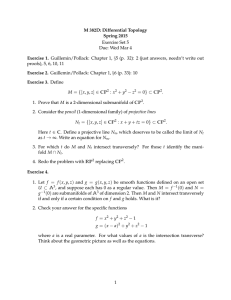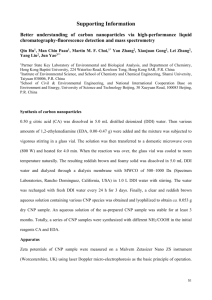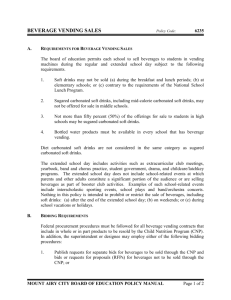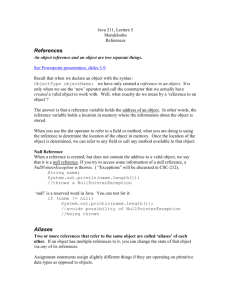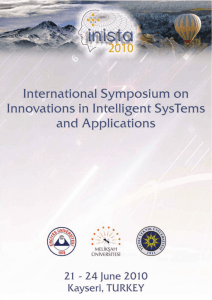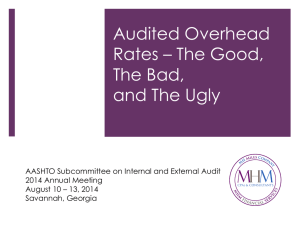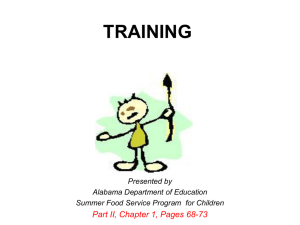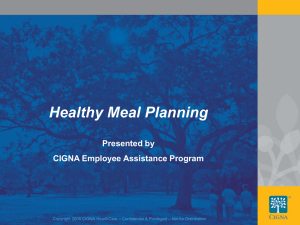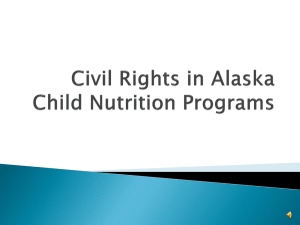Alabama CNP Directors - Alabama Department of Education
advertisement
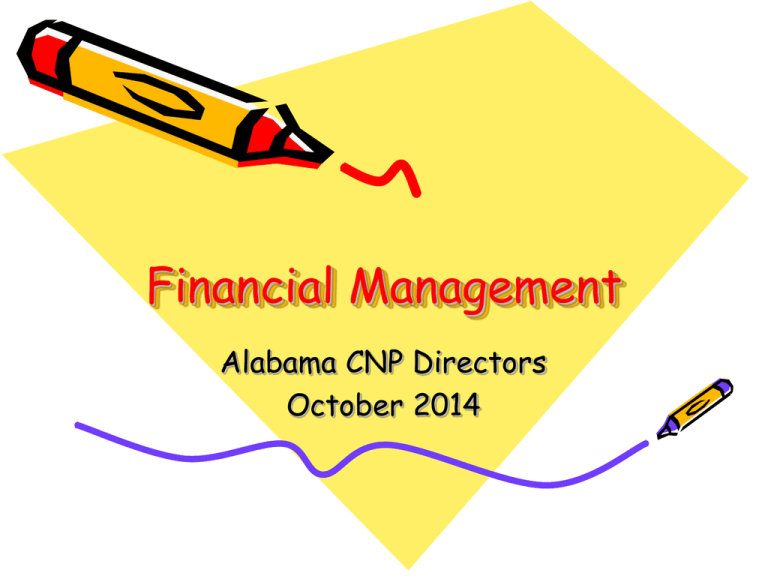
Financial Management Alabama CNP Directors October 2014 Financial Management SECTION I: UNDERSTANDING THE SDE ACCOUNTING SYSTEM MOST COMMON ACCOUNTING CODES FOR CNP (Not all inclusive, most commonly used) DEFINITIONS OF ASSET CODES DEFINITIONS OF LIABILITY CODES DEFINITIONS OF FUND EQUITY CODES DEFINITIONS OF REVENUE CODES DEFINITIONS OF FUNCTION OF EXPENDITURE ACCOUNT CODES DEFINITIONS OF OBJECT OF EXPENDITURE CODES DEFINITIONS OF FUND SOURCE CODES DEFINITIONS OF PROGRAM CODES DEFINITIONS OF SPECIAL USE CODES Financial Management Goal of a Financial Management System is to provide reliable information to the user in order that decisions might be made confidently. Financial Management • Uniformity – all data is recorded the same way each time so that the results may be compared from one accounting period to the next, one budget year to the next, or among schools or even districts. Financial Management • Accurate comparison – the ability to compare like items or like facilities (apples to apples) will provide credible information. Financial Management • Valid and reliable benchmarking – school districts can make a comparison of their data to that of recognized best practices facilities/districts Steps to Effective Financial Management • What is the SDE Accounting System? • How transactions are recorded. • How the accounting reports and printout present the financial results and position of the CNP. • How to interpret the accounting reports. • The types of revenue and expenditures of the CNP. • How to measure the CNP’s productivity and efficiency. • How to Budget and “Stick” to it. The SDE Accounting System • A 27-digit accounting code is used to identify each transaction and to provide uniformity of accounting and reporting information. Accounting System Components & Definitions 1 2 3 4 5 6 7 8 9 _ _ / _ / _ _ _ _ / _ _ _ / _ _ _ _ / _ _ _ _ / _ / _ _ _ _ / _ _ _ _ General Ledger and Special Reporting Codes 1. Fund Type & Account Group (2 digits)fund types and two account groups. USDA programs recorded as Fund Type 12 (Special Revenue Fund) for specific revenue sources that are legally restricted to expenditures for specific purposes. CNP funds fall in this category since separate budget and financial reporting requirement by state and federal gov. Accounting System Components & Definitions 1 2 3 4 5 6 7 8 9 1 2 / 4/ _ _ _ _ / _ _ _ / _ _ _ _ / _ _ _ _ / _ / _ _ _ _ / _ _ _ _ General Ledger and Special Reporting Codes 2. Account Type ( 1 digit) – designates five (5) major account types ( Assets-1; Liability-2; Fund Equity-3; Revenues-4; Expenditures-5) 3. Account Code ( Function indicated by four (4) digits) used to designate balance sheet (assets, liabilities, and fund equity), revenue and expenditure accounts. For example, Cash (0110-0119), Investments (01200129), Receivables (0130-1239), Inventories (0140-0149), Other Assets (0150-0159).liability ( 0200-0299); fund equity (0300-0399), Revenue( 4 used for identification) Expenditures ( 5 used for identification) Accounting System Components & Definitions 1 2 3 4 5 6 7 8 9 _ _ / _ / _ _ _ _ / _ _ _ / _ _ _ _ / _ _ _ _ / _ / _ _ _ _ / _ _ _ _ 4. Object (3 digits) — used to classify in detail the services or commodities bought or paid for. For example, Food Service Director 117, Manager 115, Food service Assistants 109, Garbage Removal 348, Telephone 361. 5. Cost Center (4 digits) Code for cost center is determined by each School System. Each school and Child Nutrition Central office has a different number . Central office may be 0010, HS 0031, elementary 0040, elementary 0020, middle school, 0056 Accounting System Components & Definitions 1 2 3 4 5 6 7 8 9 _ _ / _ / _ _ _ _ / _ _ _ / _ _ _ _ / _ _ _ _ / _ / _ _ _ _ / _ _ _ _ 6. Fund Source (4 digits) — identifies the sources of the money. Funds received from USDA-Food and Nutrition are coded 5100-5199, School Lunch Section 11 (5110), School Lunch Section 4 (5120), School Breakfast (5130), Commodities (5160). However, use 5101 as default except for 5170 for Summer Feeding sponsors. 7. Appropriation year (1 digit) — used to route activities to specific fund year; current yr. = 0; LEA carryover = 1 8. Program (4 digits) — code for a plan of activities and procedures designed to accomplish a pre-determined set of objectives. CNP uses 8420 only. 9. Special Use (4 digits) — used to further breakdown for any other codes – (8000-8999) Equipment Budget Equipment Purchase Request System Name: System Number: SDE Use Only Date School Name Equipment Item Quantity Cost / Item Total Cost To Complete Approval Approved By Date $0.00 $0.00 $0.00 $0.00 $0.00 $0.00 $0.00 $0.00 $0.00 $0.00 $0.00 $0.00 $0.00 $0.00 $0.00 $0.00 $0.00 $0.00 $0.00 $0.00 $0.00 $0.00 $0.00 $0.00 $0.00 $0.00 $0.00 Sheet Total: SIGNATURES REQUIRED $0.00 Summary from previous sheets: $0.00 CNP DIRECTOR: Submission Date: CSFO: SUPERINTENDENT: REVISED 7-2014 Equipment Approvals • $5,000 or greater must have written approval • Funds must available • Superintendent approval • Anticipated completion date Emergency Purchases • Prevents the production or service of the meal • Cannot be a custom designed/built item • Declared an emergency by the board • Must document all prices/all contacts Bidding Equipment • Must make a comparison of relevant features to eliminate inadequate items • Verify size requirements • Verify utility requirements • Delivery/set up requirements • Demonstration of equipment • Warranty contract • Repair contract Capital Improvement • May not purchase land or buildings • May not pay for construction that increases the square footage • Renovations or improvements that improve the facility but do not increase the size are potentially allowable • Cannot use CNP funds if not properly procured Capital Improvements • Fund balance must not drop below 2.0 months by AL • All schools must have basic large equipment • USDA gives the State the responsibility for determining if the capital project expenditure is an allowable cost • Unapproved capital expenditures are unallowable costs Uniforms • Only allowable if the LEA has an established board-approved policy to provide uniforms to all support personnel, not just CNP • Non-taxable fringe benefit if the uniforms are required to be worn as a condition of employment, are clearly identified as a uniform and not suitable for everyday wear • If a cash allowance is given and is considered as compensation, then the amount is taxable and to be included on the W-2 Adult Meals • Excess costs associated with sales or services to adults not covered by the sale price of the meal or item are not allowable expenses • Payments and reimbursement received for all children’s meals may not be used to offset the cost of adult meals Adult Meals • Meals served to non-program adults must be priced to cover all costs of the meal • Adults should receive portions comparable to the high school student • The cost of extra servings or oversized servings must be added to the price of the meal • Beverage with meal is milk- other beverage selected to be charged at ala carte established price CNP Staff Meals • Meals may be served without charge to full time staff directly involved in the production and/or service of the meal to children • Does not include principals, coaches, band directors, board members, or superintendents Program Incentives • Allowable only if promoting specific program purposes of outreach and nutrition education • Unallowable: – Staff morale boosters – Personal items for staff – Items not related to outreach or nutrition education Worthless (NSF) Checks • Worthless checks are an unallowable cost to the CNP-cannot be written off • Each school district must have a worthless check policy • A fee can be charged for all returned checks to cover expenses • Non-public funds must be used to cover any NSF check • Can use a collection agency to recover NSF check (rebate) Indirect cost • Calculated each year by the CSFO • Each school district is different • May not be charge or direct bill CNP for items calculated in indirect cost rate Pass Thru Calculations • Required to be completed and submitted to CNP Audit Manager on or before 09/30 each year • Worksheet located in the audit section of child nutrition • State funding for non certificated staff as authorized by the State Legislature for increases in annual salaries and fringe benefits since 1993 Property Inventory • • • School districts will prepare CNP physical property inventory Yearly accountability of items purchased with CNP funds required Information needed for each cost center and central office – Serial numbers, model numbers and cost of initial purchase price – Disposal of property- track all items to include how and when disposal was made; transfer information is required to account for use of federal funds for allowable purchases • Disposal may be by auction, request for proposal or scrapped • Income earned from disposal is CNP revenue and required to be deposited to CNP Best Practices • Complete monthly food/non-food inventory by cost center • Monitor absenteeism • Monitor on job injuries • Evaluate cost center equipment needs • Run monthly trial balance by cost center to determine financial status – Check revenue and expenditures Best Practices • Complete yearly lunch and breakfast school audits prior to January 1 • After school snack evaluations – 2 – First within the first 4 weeks of start – Second at another time in the year – Must request permission prior to start Best Practices • Complete food costs • Complete non food costs • Complete meals per labor hour per school • Compete all purchases – either by written or price quotes Best Practices • What are your best practices? Financial Management
